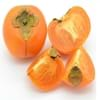Health Benefits
Cancer prevention, Cures gastro-intestinal troubles, Heart care, Increase in haemoglobin, Prevents diabetes
Cancer prevention, Heart care, Reduces nervous tension, Reduces blood circulation problems, Reduces stress, Regulation of heart rate, Strengthening of bones
General Benefits
Anti-inflammatory properties, Boosts immune system, Digestive aid, Eye care, Flu treatment, Helps in weight loss, Maintains healthy cholesterol level, Treatment of common cold
Anti-inflammatory properties, Controls blood pressure, Digestive aid, Eye care, Helps in weight loss, Improves eye vision, Maintains healthy cholesterol level, Strengthens bones
Skin Benefits
Anti-aging benefits, Brightens and lightens complexion, Reduces wrinkles, Skin revitalization, Treatment of dark spots
Anti-aging benefits, Reduces wrinkles, Treatment of dark spots, Treatment of skin diseases
Hair Benefits
Prevents hair loss, Promotes longer and healthier hair, Protects hair, Remedy for split ends, Treatment of dandruff
Protects hair
Allergy Symptoms
Abdominal pains, Anaphylaxis, Vomiting
Diarrhea, Itching of mouth, Nasal congestion, Sneezing, Swelling of face, Watery eyes
Side Effects
Allergic reaction
Allergic reaction
Best Time to Eat
As a snack in the late afternoon, Eat the fresh ones, avoid mixing with any other foods, don't eat after meal., Morning time (before lunch)
Along with meal, As a snack in the late afternoon, Don't consume at night and before bed, Morning time (before lunch)
Vitamin B5 (Pantothenic Acid)
Not Available
Vitamin C (Ascorbic Acid)
Not Available
Vitamin E (Tocopherole)
Not Available
Vitamin K (Phyllochinone)
Not Available
Lutein+Zeaxanthin
Not Available
Calories in Fresh Fruit with Peel
Calories in Fresh Fruit without Peel
Not Available
Not Available
Calories in Frozen Form
Not Available
Calories in Dried Form
Not Available
Calories in Juice
Not Available
Calories in Jam
Not Available
Calories in Pie
Not Available
Type
Tree fruit
Tree fruit, Tropical
Varieties
Victoria, President, Czar, Ariel, Avalon and Oullins Gage
Ahdar, Ahmar, Asfar, Blush, Champagne, Early Red, Eulalia, Fire Ball, Golden Red, Golden Yellow, Oliver, Thales, Thames Pride, Victor and Wolfe
Color
Pink, Purple, Red
Orange, Yellow
Inside Color
Yellow
Orange
Taste
Juicy, Sweet, Tart
Sweet, Tart
Soil Type
Clay, Loam, Sandy loam
Clay, Loam, Sand, Well-drained
Climatic Conditions
Cold
Warm to hot climate
Facts about
- In china, plums are used for production of wine.
- A chemical called amygdalin found in plum seeds, turns into toxic compound in human body.
- Plum tree produces fruit 3-5 yrs after planting.
- Loquats are used in plum wine manufacturing.
- Dried leaves of loquat are used to make herbal tea.
- The seeds of loquat are slightly toxic & the symptoms of intoxication are nausea, vomiting & shortness of breath.
Other Countries
Bosnia, Chile, India, Iran, Italy, Romania, Serbia, Turkey, United States of America
Brazil, Chile, China, Egypt, Israel, Italy, Morocco, Pakistan, Portugal, Spain, Turkey
Top Importer
United Kingdom
China
Botanical Name
Prunus domestica
Eriobotrya japonica
Synonym
Not Available
Crataegus bibas or Mespilus japonica or Photinia japonica
Subkingdom
Tracheobionta
Tracheobionta
Division
Magnoliophyta
Magnoliophyta
Class
Magnoliopsida
Magnoliopsida
Species
P. domestica
E. japonica
Compare Plum and Loquat
It is important compare Plum and Loquat as both the fruits have a different nutritional value. Their comparison can be done on the basis of their vitamin and mineral content, calories, benefits as well as characteristics, making it easier for us to choose the best fruit for our diet. Their general health benefits are as follows:
Plum Benefits: anti-inflammatory properties, boosts immune system, digestive aid, eye care, flu treatment, helps in weight loss, maintains healthy cholesterol level and treatment of common cold.
Loquat Benefits: anti-inflammatory properties, controls blood pressure, digestive aid, eye care, helps in weight loss, improves eye vision, maintains healthy cholesterol level and strengthens bones.
Fruits are also used as a remedy for various hair problems. The hair benefits of Plum are: prevents hair loss, promotes longer and healthier hair, protects hair, remedy for split ends and treatment of dandruff and hair benefits of Loquat are: protects hair. Some fruits are known to cause allergic reactions. The allergy symptoms of first fruit are: abdominal pains, anaphylaxis and vomiting and the symptoms of second fruit are: diarrhea, itching of mouth, nasal congestion, sneezing, swelling of face and watery eyes. Get sorted Plum vs Loquat comparison with the help of fruit comparison tool by fruitvs.com.









